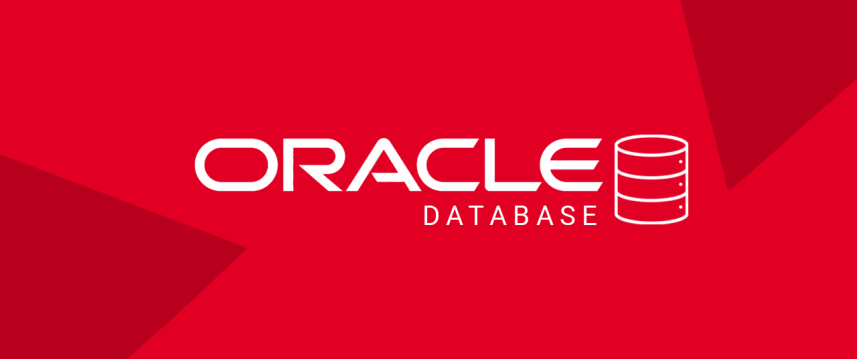
The system is constructed on a relational database framework in which users (or an application front end) may directly access data objects through structured query language (SQL). Global businesses that handle and process data across wide and local area networks frequently employ Oracle, which is a relational database design that is completely scalable. The Oracle database features a dedicated network component that enables network communications.
Oracle Database, in a nutshell, serves as the foundation of business IT environments. Depending on the pattern of structure, databases can be classified into distinct hierarchical, network, object, or document-oriented paradigms. In order to store and present business and customer data as ordered data sets, Oracle Database employs a relational database paradigm. Data points are associated using attributes, and data sets are organized into columns, tables, and rows. The effective and logical way that Oracle Database organizes and presents data sets accounts for its success. Additionally, businesses can choose whether to use Oracle Database locally on-premises or in the cloud.
In order to address this problem, relational models for database management organized data into entities and attributes that further defined them. The RDBMS having the biggest market share right now is Oracle Database. Microsoft's SQL Server is a competitor of Oracle DB in the market for enterprise databases. Other database options exist, however most of them only hold a small portion of the market compared to Oracle DB and SQL Server. Fortunately, Oracle DB and SQL Server have structures that are very comparable, which is helpful for learning database management.
Most popular operating systems, including Windows, UNIX, Linux, and macOS, support Oracle DB. Numerous operating systems, including IBM AIX, HP-UX, Linux, Microsoft Windows Server, Solaris, SunOS, and macOS are supported by the Oracle database.
How does Oracle Database work?
Like the majority of RDBMS, Oracle Database creates database structures, manages records, carries out operations, or retrieves data by using the standardized programming language SQL (Structured Query Language). In turn, PL/SQL, an Oracle programming language, is closely connected to SQL and enables the addition of Oracle programming extensions to SQL. Oracle employs row and column tables, in which data points are connected by attributes, to structure the databases. Cross-table access is now both time and cost effective as a result.
A database used to store database files, one or more database instances used to manage data, and one or more listener processes used to connect database clients to database instances make up the architecture of Oracle database systems. Here, Oracle databases divide logical and physical data structures. Among them are logical and physical storage structures
-
Physical storage structures :Data files, control files (with database metadata), and red-log files (for documenting changes).
-
Logical storage structures :Data blocks and tables, extents (for grouping logical data blocks), segments (extent records) and tablespaces (logical segment containers).
Thanks to data and network encryption, stringent authentication, permission, and authorization analyses, the well-defined structure of Oracle databases ensures that data is reliably managed with the highest level of security. Oracle also supports Java and uses PL/SQL to access Java code.
This structure enables a more modular physical structure that can be added to and altered without affecting the activity of the database, its data, or its users. This structure makes the data location irrelevant and transparent to the user for large-scale distributed computing, also known as grid computing.
What are different versions of Oracle Database?
- Enterprise Edition : Offers all features, including superior performance and security, and is the most robust
- Personal Edition : Nearly the same as the Enterprise Edition, except it does not include the Oracle Real Application Clusters option
- Standard Edition : Contains base functionality for users that do not require Enterprise Edition’s robust package
- Express Edition (XE) : The lightweight, free and limited Windows and Linux edition
- Oracle Lite : For mobile devices
What are key Oracle Database tools?
- SQL*Plus : Available on all computer systems that use the Oracle client or server software. As a command line tool for database administration, it allows command entries, data queries, and changes or deletions of database files. SQL knowledge is mandatory for SQL*Plus.
- Oracle SQL Developer : A free Java program with graphical user interface that creates or edits database projects, manages SQL statements/scripts, performs database analyses, or generates or debugs PL/SQL procedures.
- Oracle Data Modeler : A free tool aimed primarily at database designers. The Modeler can be used to design logical database models or entity-relationship models. The tool’s strengths include its intuitive operation (drag & drop), the mapping of complex database structures, and the export of database structures to the Oracle SQL Developer Tool.
- Oracle Enterprise Manager Database Control : A web-based management tool for Oracle databases that provides a graphical user interface.
- Oracle Enterprise Manager Grid Control : A flexible administration tool for Oracle environments that is web-based and provides a graphical user interface. It can be used for multiple databases, clusters, as well as standby systems.
- Oracle JDeveloper : An Oracle developer tool whose integrated development environment with Oracle and Java helps in developing database applications.
Advantages and disadvantages of Oracle Database :
Advantages
- High compatibility with all platforms and applications
- Support from all major software and hardware vendors
- Different editions from free to enterprise level
- Widely used in the enterprise IT sector
- Optional use of Oracle Cloud Databases for outsourcing and automation of database management
- Most popular relational database management system
- Large developer community and high-quality Oracle support
- Robust security and privacy features (e.g., strong authentication and authorization of access, encryption of data and networks)
Disadvantages
- Extensive SQL knowledge and administrative experience in database management are a prerequisite for the local on-premises version of Oracle
- Oracle licenses are expensive (Standard Edition approx. 17,000 USD, Enterprise Edition approx. 40,000 USD)
- High hardware requirements for local on-premises version
Reasons to Use an Oracle Database
-
Flexible Standards :The flexibility of Oracle Database is based on strong fundamentals including :
- Structured Query Language (SQL)
- Non-blocking queries
- Non-escalating row-level locking
- Transactions
- Programmable database features
-
Scale-On-Demand :With Oracle Database, your database will always be the right size for your business needs due to :
- Single Instance Oracle Database online vertical scaling
- (Single Instance) Database with Oracle Sharing linear horizontal scaling for sharing-aware applications
- Oracle Real Application Cluster (RAC) transparent, near-linear horizontal scaling
-
Highest Availability :For Oracle Database, highest availability has always been the norm. Converged single instance databases, Oracle Multitenant/pluggable databases (PDBs), Oracle Sharing/RAC, and Oracle Active Data Guard are all included in the availability category.These architectural designs safeguard the data and database. They do not, however, guarantee that a session will continue. Application Continuity offers this protection.
-
Secure Future :Traditionally, Oracle Database provided strong security through these capabilities :
- Core Database Security (users, roles, authentication, etc.)
- Encryption of Network Communication
- Transparent Data Encryption (TDE)
- Column-Level Encryption
- Oracle Key & Database Vault
- Database Auditing
- Oracle Audit Vault
- Oracle Database Firewall
- Label Security
- Real Application Security
- Virtual Private Database (VPD)
- Data Masking and Sub setting
- Data encryption : Advanced Security
- Prevent admin data access : Database Vault
- Key management : Key Vault
- Centralized auditing : Audit Vault
- Testing security : Data Masking and sub setting
- Centralized security : Data Safe
- Disruption-free modernization to Autonomous
- Limitless predictions
- Self-service with governance
- Enterprise-grade with compelling price
Gartner's analysis on Oracle Databases
- High Availability — 5.0
- Security — 4.5
- High-Speed, High-Volume Processing — 4.5
- Cloud/Hybrid Deployment — 4.5
- Administration and Management — 4.5
- Consistency — 4.0
- Multiple Data Types/Structures — 4.0
- Automated Data Distribution — 4.0
- Programmability for HTAP — 4.0
- Continuous High-Speed Ingest — 3.5
History
- 1977 : Larry Ellison, Bob Miner, and Ed Oates founded Software Development Laboratories.
- 1978 : Oracle Version 1, written in assembly language, runs on PDP-11 under RSX, in 128K of memory.
- 1979 : Software Development Laboratories changed its company-name to "Relational Software, Inc." (RSI) and introduced its product Oracle V2 as an early relational database system.
- 1982 : RSI in its turn changed its name, becoming known as "Oracle Corporation".
- 1983 : The company released Oracle version 3.
- 1984 : Oracle Corporation released Oracle version 4, which supported read consistency.
- 1985 : Oracle Corporation released Oracle version 5, which supported the client-server model.
- 1986 : Oracle version 5.1 started supporting distributed queries.
- 1988 : Oracle RDBMS version 6 came out with support for PL/SQL embedded within Oracle Forms v3, row-level locking, and hot backups.
- 1989 : Oracle Corporation entered the application-products market and developed its ERP product, based on the Oracle relational database.
- 1990 : The release of Oracle Applications releases 8.
- 1992 : Oracle version 7 appeared with support for referential integrity, stored procedures, and triggers.
- 1997 : Oracle Corporation released version 8, which supported object-oriented development and multimedia applications.
- 2001 : Oracle9i went into release with 400 new features, including the ability to read and write XML documents. 9i also provided an option for Oracle RAC, or "Real Application Clusters", a computer-cluster database, as a replacement for the Oracle Parallel Server (OPS) option.
- 2002 : The release of Oracle 9i Database Release 2
- 2003 : Oracle Corporation released Oracle Database 10g, which supported regular expressions.
- 2005 : Oracle Database 10.2.0.1 also known as Oracle Database 10g Release 2.
- 2007 : Oracle Database 10g release 2 sets a new world record TPC-H 3000 GB benchmark result.
- 2007 : Oracle Corporation released Oracle Database 11g for Linux and for Microsoft Windows.
- 2013 : Oracle Corporation released Oracle Database 12c for Linux (c stands for 'cloud'), Solaris and Windows.












